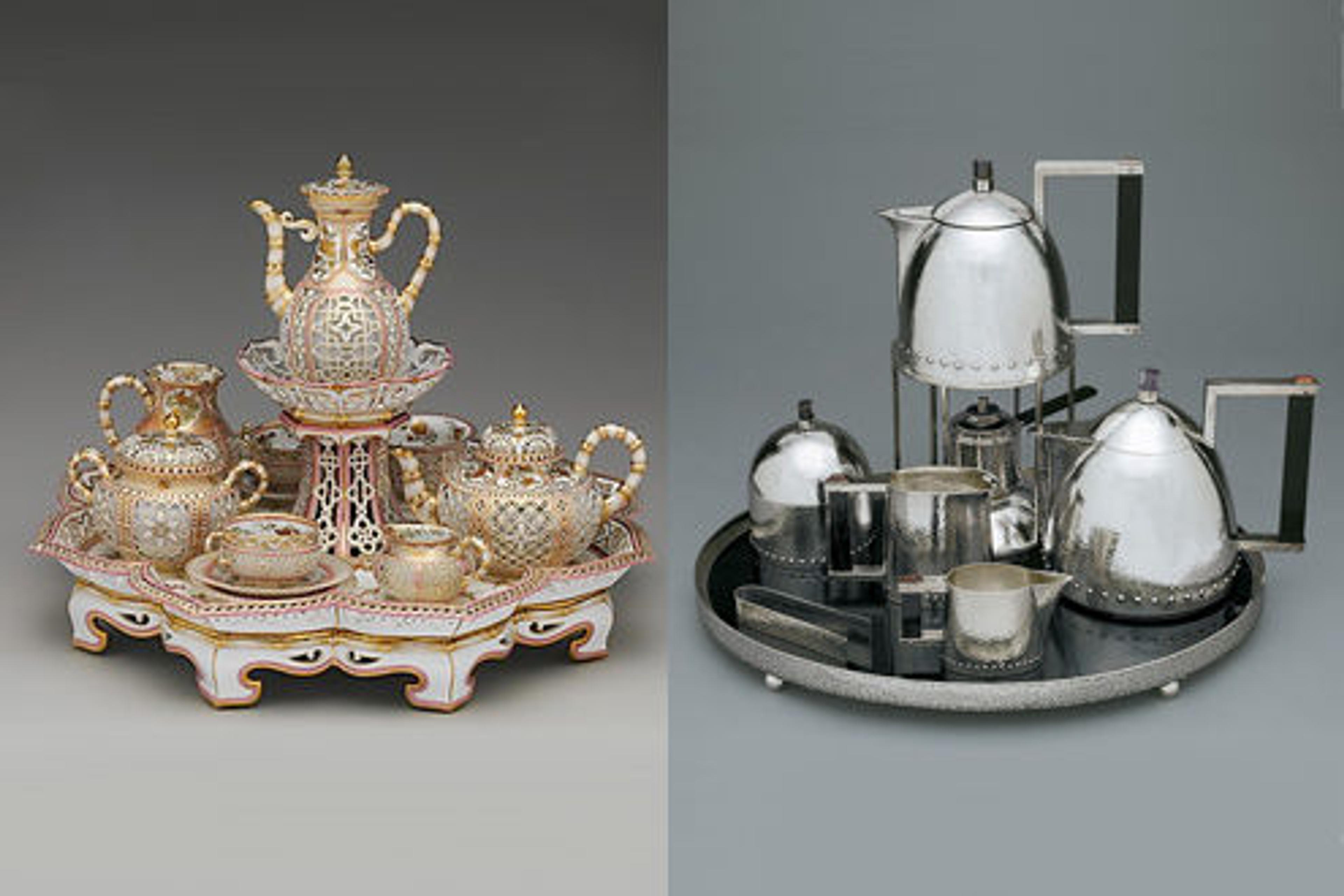
Exhibition Location: Wrightsman Exhibition Gallery, Main Floor, Gallery 521
The tension in design between austerity and opulence—the simple and the ornate—is a long-standing one. Plain or Fancy? Restraint and Exuberance in the Decorative Arts, on view February 26 through August 18, 2013 at The Metropolitan Museum of Art, invites visitors to consider their own preferences and suggests some of the cultural meanings that have been associated with the two words. The challenge is not to identify quality, or to determine “good taste” versus “bad taste.” Rather the exhibition touches on some historical moments when austerity and flamboyance in design were actively debated. In a departure from a conventional chronological presentation, the show raises a question, encouraging visitors to explore their own reactions. The 40 works of art on view are drawn from the Museum’s holdings of European decorative arts, and include ceramics, metalwork, and works in glass ranging in date from the late 14th to the early 20th century.
The word “fancy” is a shortened form of “fantasy,” which suggests that imagination and exuberance might be seen as prized formal qualities, equally present in a rustic pot and a treasury piece. Fanciness has sometimes been linked to the notion of luxury, and with it, expensive indulgences. In ancient Greece and Rome, costly imported commodities were sometimes seen as a threat to the local economy, and in later centuries condemned as a symptom of an unwelcome social mobility that challenged the existing power structure. But grandeur also had its place in securing the social hierarchy, for example, at the court of Louis XIV. Plainness, by contrast, has tended to be associated with moral virtue and purity.
A century after the Austrian architect Adolf Loos delivered his polemic “Ornament and Crime,” the Modernist aesthetic, which married form with function, remains a dominant influence. But this was not the first time that the merits of ornament had been debated. Court culture in Spain in the 16th century was permeated with the somber gravitas of King Philip II. A contemporary treatise promoting restraint in dress, comportment, and decoration argued: “…a quiet manner is the inevitable mark of a grave and dignified man, ruled by reason rather than by appetite…” These values are expressed in the architecture and metalwork of the period, which is characterized by a distinctive geometric simplicity. Implicit in this taste, which is often referred to as the “Severe Style,” is a rejection of what was seen as the sensuous decadence of Mannerist design.
Another moment of debate occurred in the 18th century, when the Rococo style was derided by advocates of Neoclassicism. The English artist William Hogarth campaigned for spontaneity and asymmetry, writing in 1753, “Simplicity, without variety, is wholly insipid…” But the same year, the whimsical fantasies of Rococo designers, which were rooted in nature’s capriciousness, were ridiculed as excessive and depraved. The taste for fanciful Chinese subjects was mocked as the “monstrous offspring of wild imagination, undirected by nature and truth.”
Plain or Fancy? points out that aesthetic responses are never neutral. Our judgments have roots in our culture, socioeconomic status, generational values, and aspirations. For some, “plain” is sophisticated, while for others “plain” is dull. The exhibition does not aspire to settle the debate but encourages visitors to consider their own responses to this issue as they experience works of art throughout the Museum. To ask now if people like art “plain” or “fancy” is to ask whether they are aristocrats or revolutionaries, Protestants or Catholics, forward-looking or nostalgic. In looking at works of art, people look at themselves.
The exhibition features an in-gallery and web-based interactive component that encourages visitors to explore, consider, and share their own sensibilities in the decorative arts. Displayed on iPads in the exhibition and as a presentation in MetMedia (www.metmuseum.org/plainorfancy), it features six works from the installation whose character—whether plain or fancy—can be debated. After viewing the objects, visitors are invited to share their personal opinions in a 120-character tweet (@PlainOrFancy), deciding for themselves whether a work is “plain” or “fancy” and if it suits their personal style.
Plain or Fancy? Restraint and Exuberance in the Decorative Arts is organized by Luke Syson, Iris and B. Gerald Cantor Curator in Charge, and Ellenor Alcorn, Associate Curator, both of the Metropolitan Museum’s Department of European Sculpture and Decorative Arts.
Installation design is by Michael Langley, Exhibition Design Manager; graphic design is by Mortimer Lebigre, Graphics Designer; and lighting is by Clint Ross Coller and Richard Lichte, Lighting Design Managers, all of the Metropolitan Museum’s Design Department.
Education programs include exhibition tours and a Friday evening program during which visitors will participate in a multi-sensory exploration of the question of “Plain or Fancy?” through several collection galleries.
The exhibition is featured on the Museum’s website at www.metmuseum.org.
###
February 25, 2013